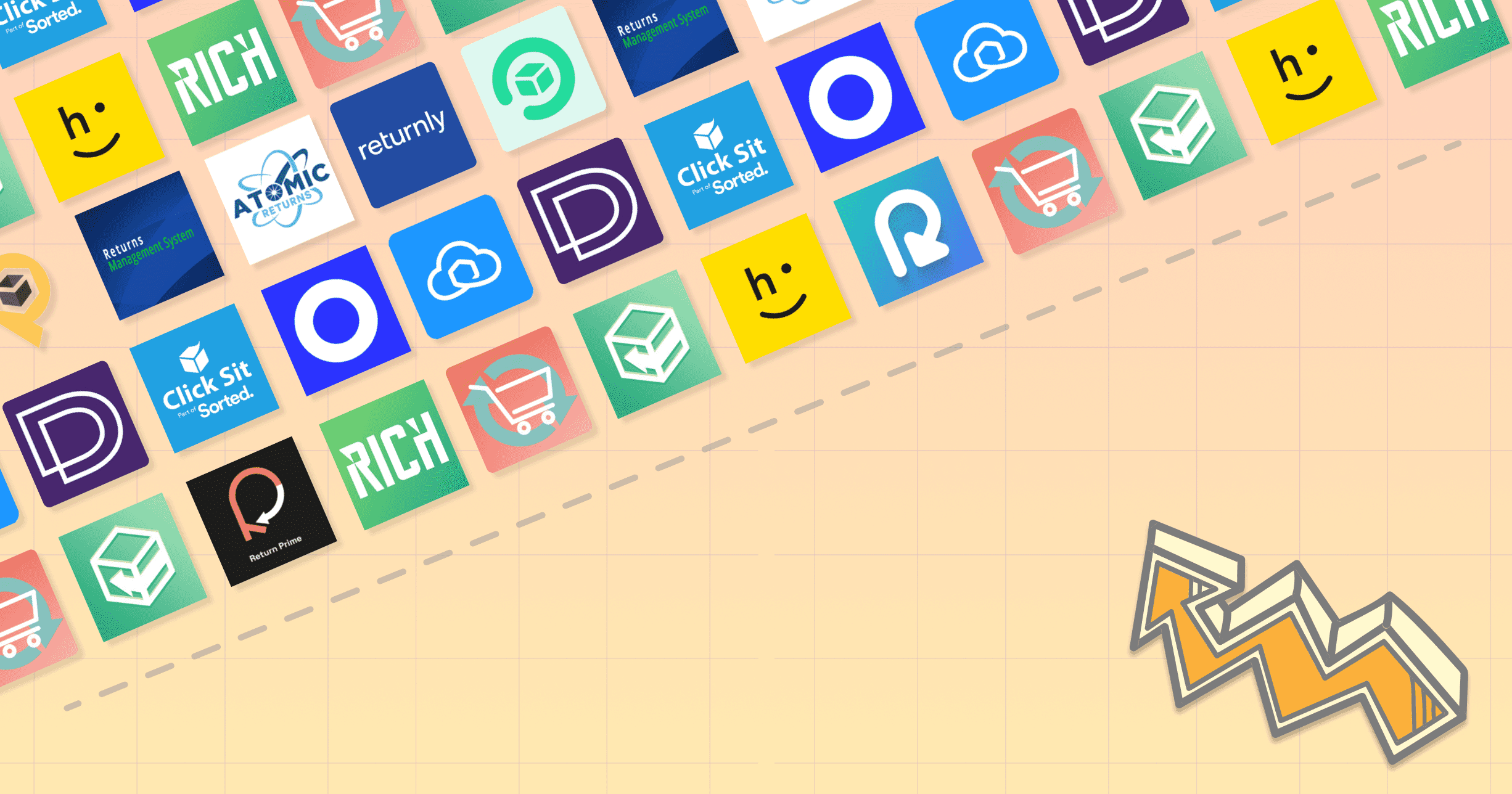From global fashion brands such as Rebecca Minkoff to fast-growing startups like Gymshark and independent labels such as Lazy Oaf, brands throughout fashion have turned to Shopify to power their e-commerce stores.
Shopify allows anyone to establish an online storefront quickly and easily, with more than a million merchants using the e-commerce platform to sell to online shoppers.
However, fashion retailers cannot simply set up and sit back. With apparel return rates as high as 50% as customers return their products, retailers must utilize Shopify’s return request management apps to improve the customer experience and minimize the cost to their business.
Here's a deep-dive into how to exchange items on Shopify online store.
The 5 best Shopify apps : How to Manage Returns on Shopify
Using these 5 top return management apps, fashion stores powered by Shopify can keep their returns under control while creating a far more positive experience for their customers. Let’s take a closer look at them and understand how to manage returns on Shopify!
1. Return Prime
Define your return policies, and Return Prime will automatically complete elements of the process accordingly, taking the pressure off your customer support staff.
Once a returned item has been processed, users can send return labels, refunds, gift cards, or discount codes to customers in a few clicks.
2. Rich Returns
Using advanced rules, Shopify users can create an automated returns process that simplifies the customer experience, boosting satisfaction and trust.
Through Rich Returns’ 1-click exchange feature, you can encourage customers to swap items rather than request a refund, minimizing your lost revenue.
Use returns data to produce detailed reports and gain actionable insight to eliminate the common return causes.
3. Loop Returns
Loop Returns is an always-on returns center that automatically handles requests according to your defined policies. Define which returns get accepted automatically and which get flagged for manual inspection, and find the delicate balance between customer happiness and financial cost.
Encourage customers to exchange unwanted products, helping to retain revenue and encourage repeat purchases — with minimal manual input.
4. Return & Exchange Portal
Allow customers to request a refund in just a few clicks. Return & Exchange Portal’s AI algorithm will handle requests automatically, based on your predefined store policies and configurations.
They also offer various options for customers to choose to maintain profits and maximize lifetime value — whether it’s refunds, exchanges, or donating unwanted items to good causes.
5. Atomic Returns
Adhere returns to defined conditions and map out specific policies for categories, products, or even consumer behaviors, with fees automatically adjusted to the situation.
Drill down into product data, customer behavior, and return trends using Atomic Returns’ analytics tools, and tailor your policies accordingly.
In sandbox mode, test scenarios before they go live and spot potential exploits before your problem customers do.
Don’t just handle returns, eliminate them.
These 5 best Shopify apps for clothing store returns management can ease the burden on e-commerce businesses, but you must also seek solutions to reduce the return rates.
Feminine hygiene brand Thinx developed ‘Know Your Flow’ quiz tool, which asks customers a series of questions and uses this information to provide personalized recommendations. This, in turn, increases the likelihood of customer keeping the product.
Likewise, beauty brand Sephora implemented ‘smart reviews,’ which contain user information such as skin type and eye color, so customers can filter reviews by characteristics and avoid purchasing products that aren’t right for them.
Brands such as Kaikini, use on-demand manufacturing to provide custom-fit bikinis in the fashion space. The customer simply plugs their measurements and preferences into the product page, and the order is placed.
Also read: 10 Tips For Creating Content For Fashion Brands That Clicks!
Bonus: 3DLOOK's YourFit
Alternatively, to reduce returns and refunds- brands can turn to solutions such as 3DLOOK’s YourFit, a user-friendly size-fit personalization platform.
Powered by 3DLOOK’s AI-first mobile body scanning technology, the shopper is guided through the measuring process by on-screen cues and a voice assistant. From just two quick photos - one from the side and one from the front - YourFit delivers trustworthy size and fit recommendations based on Shopify pos data.
It helps shoppers find the best size clothing based on customers’ unique body measurements with an engaging virtual try-on experience! This gives the customers a clear understanding of how a product will look and fit, helping them make purchases that they love and are unlikely to return.
Customers are more likely to purchase your garments from your online store as the tool increases shopping confidence and user engagement (and are less likely to return them)!
9 more of the best Shopify apps for apparel return management
1. PostCo 360: Returns Center
PostCo 360 allows you to define what can and can’t be an returned item and when, and auto-approve requests according to these pre-set conditions.
Label creation and refunds are handled automatically, re-sellable items are instantly restocked, and customers are always informed — without lifting a finger.
2. Happy Returns
Set your policies and put your return process on autopilot. With built-in intelligence, Happy Returns analyzes return reasons and store inventory to determine when to encourage exchanges.
CX teams can generate reports, blacklist problem shoppers, and maximize return ROI with all transactions recorded.
Also read: 5 Strategies to Optimize Your Ecommerce Merchandising
3. Returns Management System
Returns Management System allows multiple returns through a single form and process requests instantly.
Generate return shipping labels manually in seconds, or set them to send automatically, saving time for shop owners and customers alike.
Get a clear view of commonly returned products and return reasons through graphical reports and leverage this data to improve the customer experience.
Also read: 8 Ways to Use Social Proof to Increase Ecommerce Sales
4. Automated RMAs and Returns
Rather than customer services, let Automated RMAs and Returns handle your entire returns process based on defined rules and conditions.
Use the time saved to manage your returns to collaborate with your team through its easy-to-use dashboard, and address any issues that require manual input.
5. FREE Returns Portal
Follow a simple two-step integration and reduce operational costs through a fully automated process based on your defined store rules and policies.
For sustainability-focused fashion brands, FREE Returns Portal eliminates paper labels through its entirely digitized process. Customers book their returns online and receive a QR code with the original payment method to bring to any of Doddle’s 32,000 drop-off locations.
6. AfterShip Returns Center
Offer returns in a few clicks and keep customers informed with timely status updates, reducing delays and anxiety that hamper the customer experience.
AfterShip Returns Center automatically processes returns by tailoring the eligibility rules and instantly sending customers prepaid return labels.
7. Exchange It
Eliminate the extra work that comes with exchanging items by integrating requests into your regular order dashboard.
Exchange It is perfect for exchanging products with size or color problems. Users simply can open the original order, select the returned product and replace it with a new variant. The selected item will be placed with new orders.
8. Sendcloud
Give customers options and create a returns process that boosts retention. Offer refunds store credit or exchange and returns via post, in-store, or drop-off points across Europe.
Through Sendcloud’s analytics dashboard, gather insight from your returns data and take action to reduce your future return rates.
Build your portal on Sendcloud’s returns API and enhance your returns workflow without changing tools or systems.
9. Returnly
Allow automation to determine return eligibility, automatically generate shipping labels, issue refunds, and keep customers informed via email with Returnly.
Let your team reclaim their time typically spent on responding to return queries and allow the real-time returns data to help you make informed decisions for your business growth.
Overcoming fashion’s sky-high returns
US consumers are projected to return more than $500b in goods in 2021. Using these best Shopify apps for apparel, users can limit the impact of returns on their business.
However, retailers shouldn’t simply manage returns but eliminate them. Make use of the mentioned Shopify apps and work its magic for your Shopify store. Watch your store thrive!
Read More:








